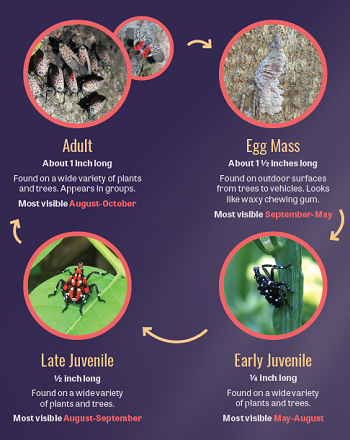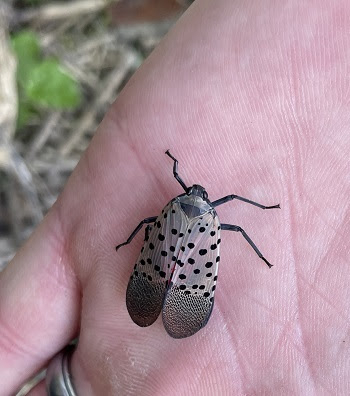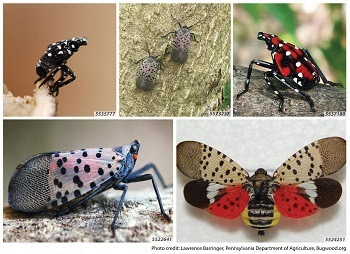MDARD Completes 2024 Spotted Lanternfly Tracking Efforts Across Michigan
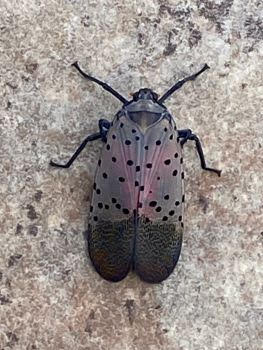
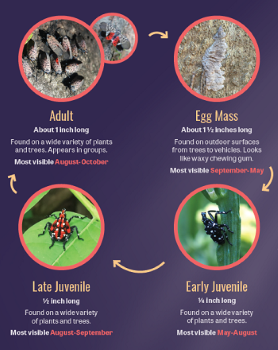
The Michigan Department of Agriculture and Rural Development, in partnership with the U.S. Department of Agriculture and a variety of local and regional organizations, has completed its 2024 spotted lanternfly monitoring efforts. Throughout the summer and fall, teams across Michigan worked collaboratively to monitor and track the spread of this invasive pest, resulting in new detections in Macomb and Lenawee counties, as well as new findings in previously affected areas.
“We are grateful to our partners for their ongoing work helping us monitor the spread of spotted lanternfly in Michigan,” said Steve Carlson, MDARD’s Pesticide and Plant Pest Management Division Director. “This collaboration allows us to collect critical data on new infestations which helps better understand how this pest is spreading across the state.”
As part of the 2024 monitoring efforts, USDA’s Animal and Plant Health Inspection Service confirmed the presence of spotted lanternfly in several new locations across Michigan. In Macomb County, populations were confirmed at two separate sites about one mile apart. In Lenawee County, several adult spotted lanternfly were detected at two locations more than seven miles apart. These new findings add to previous detections in Monroe, Oakland, and Wayne counties, highlighting the continued spread of this invasive pest across the region.
Spotted lanternfly, an invasive species native to eastern Asia, was first detected in the United States in 2014. Since then, it has spread rapidly with confirmed populations in 18 states. The insect has distinct life stages. Nymphs (juvenile spotted lanternflies) are black with white spots, then become red with black spots as they develop. Adults are roughly 1-inch long and 1/2-inch wide. Their brown forewings have black spots at the front and are speckled towards the rear. When their wings are unfolded, their distinctive scarlet hindwings become visible.
Spotted lanternfly prefers to feed on the invasive tree-of-heaven (Ailanthus altissima), but also feeds on a wide range of plants including grapevines and trees such as black walnut, river birch, willow, sumac, and red maple. When feeding, spotted lanternfly produces a sticky liquid, honeydew, that can collect on the ground or surrounding vegetation. This results in the growth of sooty mold, which can discolor and kill plants.
Since the first detection of spotted lanternfly in Michigan in 2022, MDARD and its local and regional partners, including Michigan State University, Michigan’s cooperative invasive species management areas, and USDA-APHIS have assisted in monitoring over 100 locations across the western and southern parts of the state.
“MDARD is committed to raising awareness about this pest and its impact,” Carlson continued. “Public vigilance is key to helping slow the spread of invasive species, and we encourage all Michiganders to stay informed and proactive.”
If you are traveling in areas with known spotted lanternfly populations, be sure to check your vehicle and any items that have been outdoors for the presence of spotted lanternfly insects and egg masses and remove them before leaving.
If you find a spotted lanternfly egg mass, nymph or adult outside of known areas of infestation take one or more photos, make note of the date, time and location of the sighting, and report it online to Eyes in the Field. Photos are necessary to verify a report and to aid in identification.
For additional information on identifying, reporting, and managing spotted lanternfly, visit Michigan.gov/SpottedLanternfly. You can also learn more at USDA’s spotted lanternfly website found at USDA APHIS | Spotted Lanternfly.
Michigan’s Invasive Species Program is cooperatively implemented by the Department of Environment, Great Lakes, and Energy; the Department of Natural Resources; and the Department of Agriculture and Rural Development.




